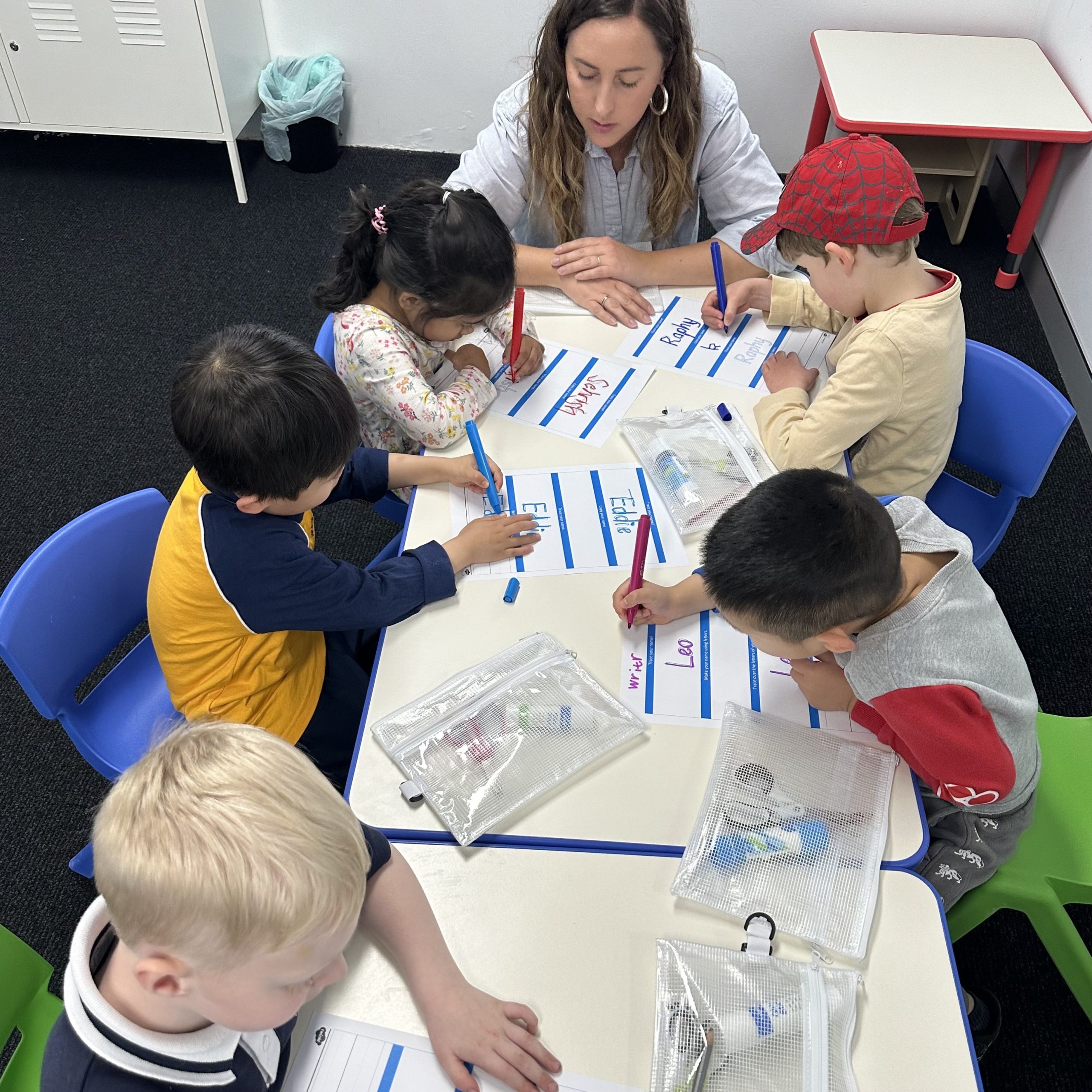
Supporting Students with Classroom Modifications for Handwriting : Occupational Therapy Solutions in Bondi Junction and Mascot
Handwriting challenges can significantly impact a student’s ability to keep up with classroom tasks and demonstrate their knowledge. At OneOnOne Children’s Therapy, we specialise in providing comprehensive Occupational Therapy services in Bondi Junction and Mascot to support children with handwriting difficulties. Our Occupational Therapists work closely with teachers and parents to offer tailored strategies that help students succeed in school, ensuring they have the right tools to thrive.
Understanding Handwriting Issues in Students
Handwriting difficulties can vary from student to student, but some of the most common challenges include:
- Legibility: Poorly formed letters that are difficult to read.
- Letter Formation: Trouble with forming letters consistently and correctly.
- Spacing: Irregular spacing between letters and words, making the writing unclear.
- Fine Motor Skills: Weakness in the small muscles used for writing.
- Processing Speed: Taking longer to complete writing tasks, leading to unfinished assignments or rushed work.
Addressing these handwriting issues with Occupational Therapy can help children in Bondi Junction and Mascot achieve academic success while building their confidence.
Effective Classroom Modifications for Handwriting Issues
Our Occupational Therapists in Bondi Junction and Mascot recommend targeted classroom modifications for handwriting to help students:
1. Supportive Instructional Strategies
- Explicit Instruction: Teach proper letter formation and spacing through clear, step-by-step guidance.
- Modelling: Demonstrate effective writing processes, such as outlining and revising written work.
- Extra Practice: Give students more time to practice individual letters or words.
- Peer Support: Pair students with peers who can provide handwriting models and encourage practice.
2. Modified Writing Assignments
- Reduced Writing Requirements: Focus on content by reducing the amount of writing needed for tasks. Alternatives like oral presentations or multimedia projects can be useful.
- Extended Time: Provide extra time for students to complete writing tasks.
- Chunking Assignments: Break down larger tasks into smaller, manageable sections.
3. Alternative Formats and Tools
- Assistive Technology: Provide access to tools like speech-to-text software and word processors that help students bypass handwriting difficulties.
- Adaptive Writing Tools: Use pencil grips or adapted keyboards to make writing more comfortable.
- Specialised Paper: Offer lined or graph paper to guide letter and word spacing.
4. Environmental Adjustments
- Flexible Seating: Ensure the student has appropriate seating to promote good posture while writing.
- Minimising Distractions: Create a calm and focused environment to help the child concentrate on writing tasks.
The Role of Occupational Therapy in Supporting Handwriting
Occupational Therapy is crucial in helping children with handwriting difficulties develop the fine motor skills, coordination, and sensory processing needed for writing. At OneOnOne Children’s Therapy, our Occupational Therapists focus on the following areas:
- Motor Skill Development: Strengthening hand muscles and improving coordination to enhance writing ability.
- Handwriting Programs: Structured activities aimed at improving letter formation, spacing, and overall legibility.
- Classroom Observations: Our Occupational Therapists can visit classrooms in Bondi Junction and Mascot to provide real-time recommendations for adjustments tailored to each child’s needs.
Collaboration with Educators and Parents
Collaboration between Occupational Therapists, teachers, and parents is key to ensuring that children receive consistent support. Our team works directly with teachers in Bondi Junction and Mascot to implement the best classroom modifications for handwriting. Parents are also provided with activities and techniques to practice at home.
- Teacher Training: We offer guidance to educators on how to modify tasks and provide accommodations that support the child’s writing skills.
- Parent Involvement: Parents receive recommendations for reinforcing handwriting skills at home, contributing to the child’s overall development.
Promoting Self-Advocacy for Children
Children with handwriting issues can learn to advocate for themselves by understanding their challenges and the accommodations that help them succeed. Our Occupational Therapists encourage students to:
- Recognise Strengths: Help children identify their handwriting challenges and celebrate their progress.
- Self-Monitor: Teach children to assess their writing and request accommodations when needed.
- Set Goals: Collaborate with children to set achievable writing goals, fostering a sense of ownership and confidence.
Conclusions about Classroom Modifications for Handwriting
Supporting students with handwriting difficulties through tailored Occupational Therapy and classroom accommodations ensures that they can reach their full academic potential. At OneOnOne Children’s Therapy, our Occupational Therapists in Bondi Junction and Mascot provide customised solutions to help children improve their handwriting, boost their confidence, and excel in school.
Invite our Occupational Therapists to visit your child’s classroom to observe and implement effective handwriting strategies. Contact us today to schedule a consultation and empower your child with the tools they need for success. Our OT’s are proud members of AHPRA.
Contact Us
Call us at (02) 80657837 or email us to schedule a consultation. Visit our clinics in Bondi Junction and Mascot for expert Occupational Therapy support.
Let’s work together to support your child’s handwriting journey!
